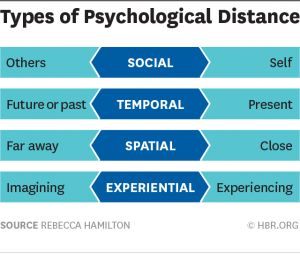I love dining out. I love live theatre and for me, restaurants are theaters. Like theatre, restaurants create a show for us to experience, including director, actors, staging and lighting.
A couple of weeks ago I had dinner at a local restaurant that is part of a restaurant group. It was an experience in innovation and leadership that I feel compelled to share.
I have eaten at the original restaurant a couple of times and I described the experience as “dinner & a show”. It’s a fine dining restaurant so one expects special, and they delivered. The “show” in this case is visible, it’s in your face. The goal is to show the patron how creative they are. It is mostly about the way the food is prepared, e.g. molecular gastronomy, liquids that taste like solids, or foam that tastes like celery or the like, but it also is about the presentation (packaging) and the delivery.
This newer restaurant in the group is casual. The menu is simple, the atmosphere is lively and casual. On the surface, no different than many other restaurants. And, yet, from the moment we walked in, I sensed a difference.
What I first noticed was the atmosphere. There was loud music playing, but the room didn’t feel loud. Conversation was at a normal level, we could easily hear each other. The lighting was perfect, bright enough to read the menu, dim enough to be soft and calm. We were seated at the bar which wraps around the kitchen. Again, subtle but significant differences. The chairs had wide soft seats, in short, comfortable. When was the last time you sat on a comfortable bar stool?
Next, was the service. The server was friendly and engaging, dressed in jeans and a cowboy shirt. And yet, much like the atmosphere, it was clear, he was a professional, except for his attire, he would have easily fit at their fine dining restaurant.
Last, of course was the food. And there was the same subtle, yet profound, difference here. The menu was simple, I even questioned my husband for ordering salmon, which we make all the time. I should have known better. Like everything else, the food was anything but ordinary. And, the best part was we got to watch them make it over a roaring fire right there in front of our eyes. There were 5 cooks preparing all the plates, one was the leader, and it took us quite a while to figure out who he was, again, subtle but different.
In short, they delivered an incredible customer experience. And, unlike their fine dining partner, if I hadn’t been looking closely, except for the cooking over the roaring fire, the “show” was invisible. I wouldn’t have even noticed the parts, yet, I would have felt the wonder of the experience.
None of this was accidental, the leadership of this organization knows the business they are in and they ensure they have the talent, culture and process to consistently deliver. They start with the same ingredients as their competition, then they add their secret sauce to the food, to the atmosphere and the service, thereby creating a unique experience. So unique, that it caused someone, me, to blog about it two weeks later.
What this restaurant group teaches us is that customer experience can be delivered visibly or invisibly. It’s up to us to figure out what works in what situation and then, in the words of one of my Vistage members, Gallant Building Solutions, “deliver a WOW experience for every client, every time”.
- Does your culture allow team members to operate both independently and as a team?
- How is your product differentiated, even if it is a commodity like salmon?
- What is your equivalent of atmosphere? Can your customers converse in a normal tone or do they need to shout?
- Do your customers perceive your “servers” as true professionals?
Elisa K Spain
You can read more of my blogs and leadership quotes here.

 The initial results of my Pivot are excellent. I feel I have much greater clarity regarding the next 3-5 years..
The initial results of my Pivot are excellent. I feel I have much greater clarity regarding the next 3-5 years..  John Yerger
John Yerger